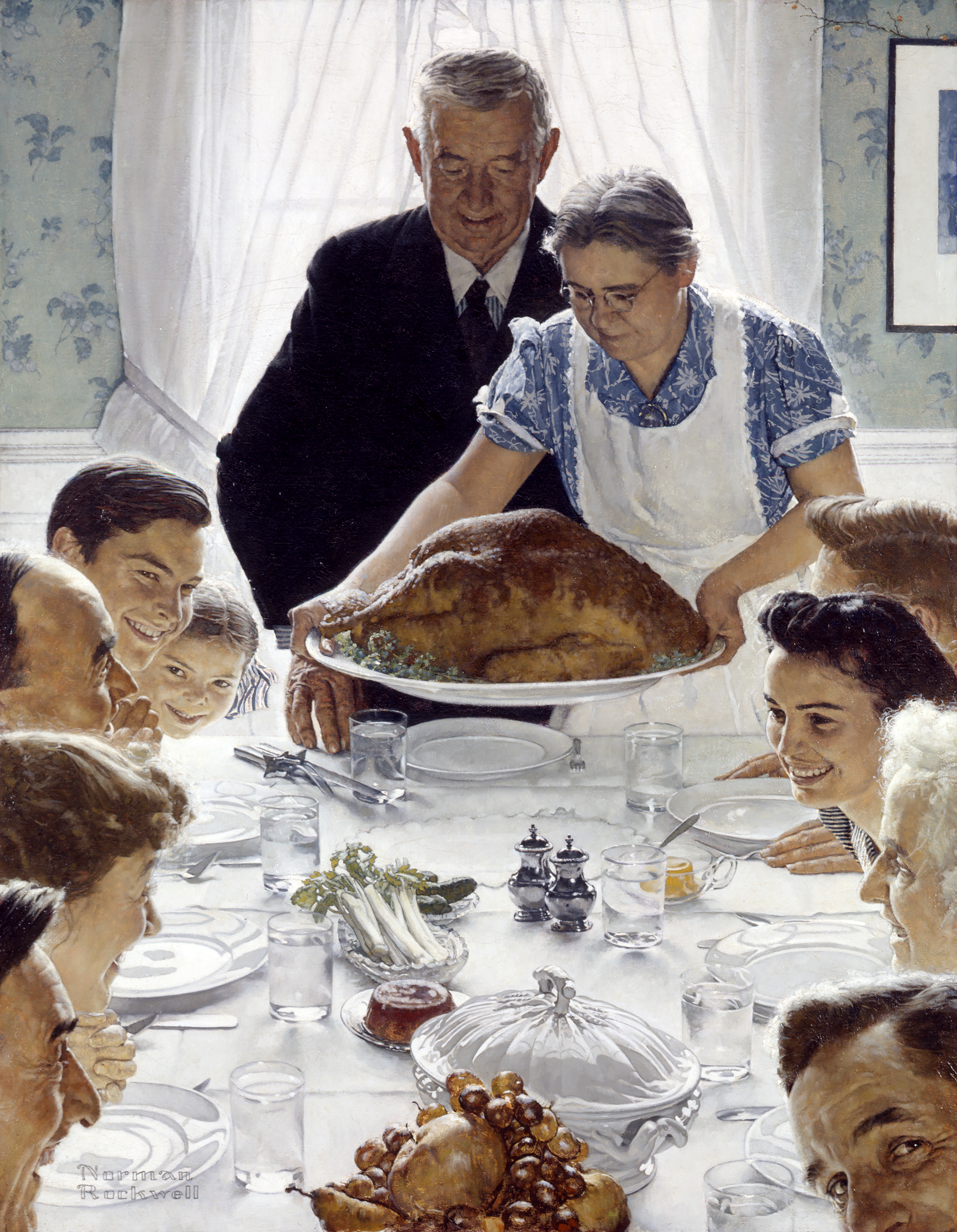Freedom from Want: Differentiating Between Needs and Wants Today
Overview:
Students view and discuss Norman Rockwell's Freedom from Want, and then reflect on how this freedom is present in their lives. Freedom from Want represents the essential elements needed for survival, including food, water, shelter, and companionship. After a read aloud and discussion of the story, Lily Learns About Wants and Needs by Lisa Bullard, students create a poster demonstrating their understanding of the difference between needs and wants.
Enduring Understandings / Essential Questions:
- There are some things, or wants, that everyone needs to survive.
- These basic needs include: food, water, shelter, and companionship.
- There are other things that we may want or enjoy having, but which are not essential.
- It is important that we be able to differentiate between needs and wants.
- What are some things that no one can do without?
- What are some things that we want but can do without?
- How do needs and wants differ?
- Grade
- K-2
- Theme
- Four Freedoms; Freedom From Want
- Length
- This activity may be completed in one 40 minute period or in two 20-30 minute periods.
- Discipline
- Social Studies; Language Arts: Reading; Language Arts: Writing
- Vocabulary
- Wants; Needs; Choices; Companionship
Objectives:
- Students will be able to differentiate between needs and wants.
- Students will be able to name basic needs.
- Students will create a poster correctly identifying needs and wants.
Background:
The title, Freedom from Want, can be confusing. Some students may initially interpret it to mean freedom to have anything they wish. President Roosevelt, in his 1941 Annual Message to Congress, stated that Freedom from Want, translated into world terms, “means economic understandings which will secure to every nation a healthy peacetime life for its inhabitants-everywhere in the world.” At the time, the United States was emerging from the Great Depression, when many people wanted for basic life necessities, including food, clothing and shelter. In Freedom from Want, Norman Rockwell depicts an ideal American Thanksgiving, in which some of these necessities are apparent in this gathering of family and friends.
Materials:
Media Resources
Freedom from Want
"All I Really Need" by Raffi
Classroom Supplies:
- Image of Norman Rockwell’s Freedom from Want
- Lily Learns about Wants and Needs by Lisa Bullard
- Wants Versus Needs: Food and Drink by Linda Staniford, from a series by Heineman Raintree. Other titles in the series include A Place to Live, Clothes, and Possessions.
- Large pad or white board divided into two sections, labeled as Wants and Needs.
- Recording/music video of “All I Really Need” by Raffi. This song is found on the Baby Beluga album; the song and lyrics are available in the media resources above.
Activities:
- Review close reading of Freedom from Want.
- Read aloud Lily Learns about Wants and Needs by Lisa Bullard.
- Stop at the end of each chapter. Have students reflect on what the chapter is about and share any thoughts they may have.
- Optional: You may choose to read one or all of the books from the Wants Versus Needs series before continuing to the activity.
- Teach the students Raffi’s song, “All I Really Need.”
- Have the students create a poster, collaboratively or independently, illustrating what they understand about wants and needs. Older students may write a paragraph to go with their posters explaining the difference, and the choices featured on their posters.
Assessment:
- Do student posters reflect an understanding of wants/needs?
- Are students able to explain the difference between wants and needs?
- In written responses, do students support the wants/needs choices that they made in a clear, organized way?
Standards
This curriculum meets the standards listed below. Look for more details on these standards please visit: ELA and Math Standards, Social Studies Standards, Visual Arts Standards.
- CCSS.ELA-Literacy.RI.1.1
- Ask and answer questions about key details in a text.
- CCSS.ELA-Literacy.RI.2.1
- Ask and answer such questions as who, what, where, when, why, and how to demonstrate understanding of key details in a text.
- CCSS.ELA-Literacy.RI.K.1
- With prompting and support, ask and answer questions about key details in a text.
- CCSS.ELA-Literacy.W.1.2
- Write informative/explanatory texts in which they name a topic, supply some facts about the topic, and provide some sense of closure.
- CCSS.ELA-Literacy.W.2.2
- Write informative/explanatory texts in which they introduce a topic, use facts and definitions to develop points, and provide a concluding statement or section.
- CCSS.ELA-Literacy.W.K.2
- Use a combination of drawing, dictating, and writing to compose informative/explanatory texts in which they name what they are writing about and supply some information about the topic.
- D1.3.K-2.
- Identify facts and concepts associated with a supporting question.
- D1.4.K-2.
- Make connections between supporting questions and compelling questions.
- D2.Eco.2.K-2.
- Identify the benefits and costs of making various personal decisions.
- D3.2.K-2.
- Evaluate a source by distinguishing between fact and opinion.
- D4.2.K-2.
- Construct explanations using correct sequence and relevant information.
- D4.5.K-2.
- Ask and answer questions about explanations.
